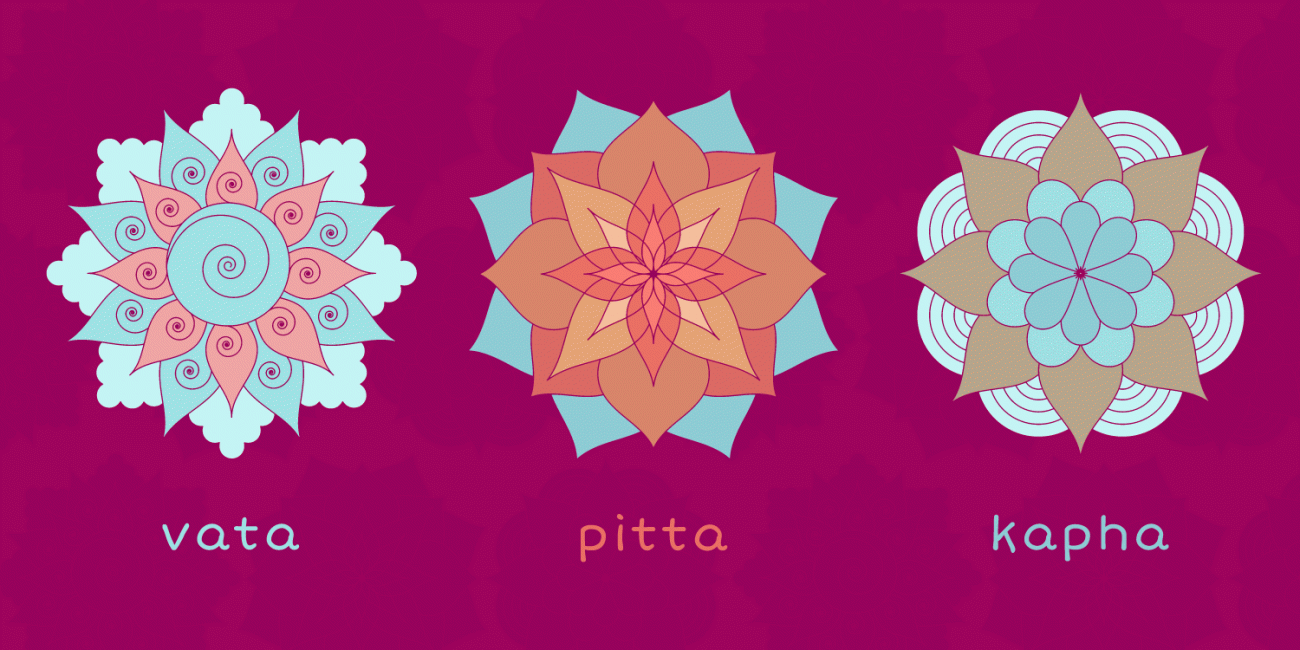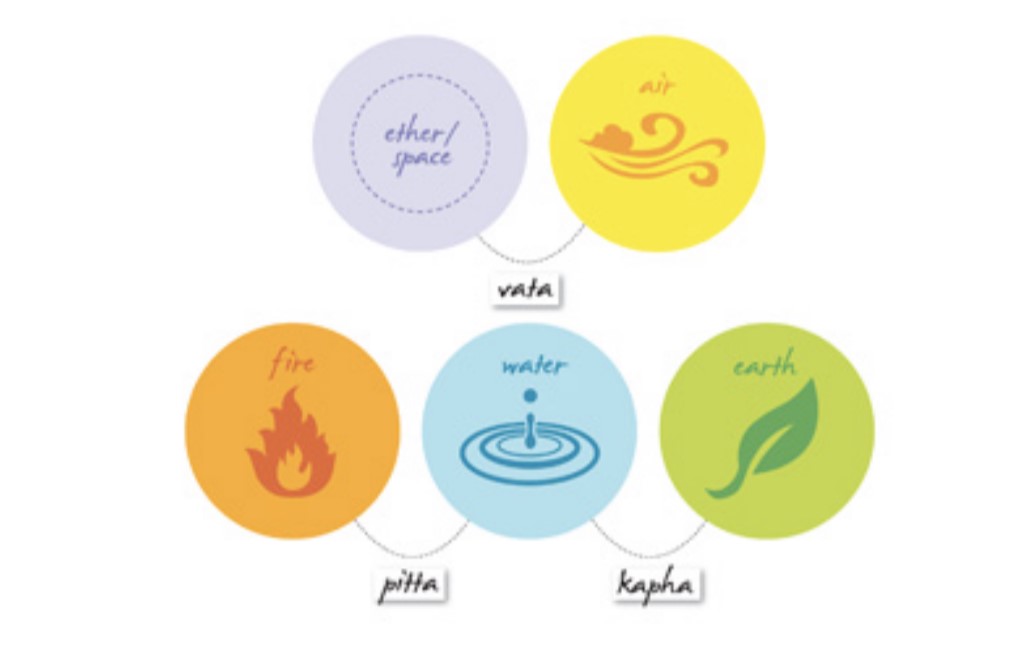
What Dosha are you? And why you need to know to practice Ayurveda Every Day.
The beauty of Ayurveda is that it teaches us about how everything is connected.
From the food we eat to the world we live in, everything is made up of the same substances from nature. Ayurveda helps to break down just how this is so.
Have you heard about the Doshas? The Doshas are a key element in Ayurveda. They help you understand just how intricately connected to nature you truly are.
The Doshas represent how the five elements work together in the body to help you function and thrive. From your heart to your lungs and even your skin, the elements are present in each and every organ and tissue.
While there are many intricacies when it comes to the Doshas, today I’m going to make sure that you’re equipped with the basics. So buckle up and join me as we take a journey through the science of life or, what I like to call the science of your SELF.
First stop? The Doshas!
What are the Doshas?
Knowing about the Doshas allows you to understand where you most often and easily go out of balance. To understand the nature of your imbalances, you have to understand how the elements lend their qualities to the Doshas.
There are three Doshas: Vata, Pitta, and Kapha. Each of these Doshas represents a combination of the five elements of nature: ether, air, fire, water, and earth. The following diagram shows you how the elements combine to create the three Doshas.

A Closer Look…
Each Dosha has its own set of qualities – based on the elements it’s made up of. Each one is the boss of certain organs, tissues, and physiological functions in the body. The Doshas can be seen in everything from the time of day to the seasons of the year to the time of life you’re currently living in.
They show up a certain way when they are in balance, and appear as symptoms (typically unwanted and uncomfortable) when they’re out of balance.
Let’s take a closer look at each Dosha so you can start to understand how they show up for YOU.
You have a specific combination of each one of the Doshas in your body. This is what makes up your Ayurvedic Blueprint.
You are born with this special blueprint and based on your life experiences and circumstance, this blueprint will shift. Your job is to find the remedies that help you stay as close to your original blueprint as possible. This is what helps you stay healthy, and this health is specific to you!
Vata Dosha (Ether/Space and Air)
Vata is responsible for change, movement, and degeneration in the body. It’s the force that brings us out of the womb, and it’s the energy present when we pass. You can see the space and air of Vata Dosha in the body in many ways, and its deconstructive nature shows up in many ways as well – especially within the aging process.
Qualities: Dry, Light, Cold, Rough, Subtle, Mobile, Clear
Seats in the Body: Colon (Large Intestine), Joints, Bones, and Nerves
Time of year: Fall and Early Winter
When Vata is in balance:
You are wise, sensitive, and independent.
You have healthy boundaries that support and empower you.
You take responsibility for your life and the effect you have on others.
You’re caring, thoughtful, introspective, and creative.
Your voice matters.
You honor and respect yourself.
When Vata is out of balance, you’ll experience:
- Stiff and cracking joints
- Fragile or brittle bones
- Pale skin
- Constipation
- Shallow breathing
- Cold hands and feet
- Feel cold to the bone
- Emotional instability or distance

Pitta Dosha (Fire and Water)
Pitta is the operator that governs digestion and the processing (absorption and assimilation) of nutrients. It’s the furnace that gives you fuel, bringing warmth, energy, and direction to the body.
Qualities: OIly, Sharp, Hot, Light, Mobile, Liquid
Seat in the Body: Small Intestine, Heart, and Skin
Time of year: Late Spring and Summer
When Pitta is in balance:
You are smart, confident and capable.
You’re an action-taker who isn’t afraid to take risks.
You have a powerful digestive system.
You’re strong-willed and have a natural gift for leadership.
You bring warmth and clarity to the people in your life.
You’re straightforward and express yourself with honesty.
When Pitta is out of balance, it looks like:
- Inflammation
- Headaches and migraines
- Chronic allergies that cause postnasal drip
- Hot, loose or sticky stool
- High blood pressure
- Skin rashes and red skin
- Muscle tension and sharp pain

Kapha Dosha (Earth and Water)
Kapha is the generator of energy in the body. Just like water and earth, it governs structure and flow. I like to think of Kapha like a healthy flowing river – a steady stream of powerfully moving water through structured canyon walls.
Qualities: Heavy, Slow, Cold, OIly, Smooth, Dense, Stable, Sticky
Seat in the Body: Stomach, Brain, Fat Cells
Time of year: Late Winter and Early to Mid Spring
When Kapha is in balance:
You are kind, loyal, and stable.
You’re a provider – abundant and generous.
You’re a caregiver who also takes care of herself.
You learn how to set healthy boundaries and put yourself first.
You’re empathic. People trust you and come to you for support.
You’re blessed with a steadfast nervous system, endurance, and strength.
When Kapha is out of balance, you’ll experience:
- Congestion and sluggishness
- Mucous and phlegm
- Slow metabolism
- Chronic respiratory issues
- Abnormal heaviness and weight gain
- Edema and water retention
- Bloating and pressurized gas
- Thick body tissue
What’s YOUR Ayurvedic Blueprint?
Now that you know all about the Doshas, you’re probably wondering how to find out what YOUR Ayurvedic blueprint is!
If you want to learn more about your Ayurvedic blueprint and how to truly start living Ayurveda, take my free and AMAZING Dosha Quiz! Or, schedule an Ayurvedic pulse reading with me!
Did you learn something new about yourself from reading this article? I’d love to hear about it! Share in the comments below.




Loved reading about the dishes, however I still find it hard to identify what my birth dosha is?
I can identify with 2 out of balance doshas based on the out of balance lists
Hi Daisy! Everyone is a combination of all 3 doshas and the likelihood that you have two dominant Doshas is high. So trust your gut, trust your answers, and trust the result. You can always sit with it for a while, see if it really feels true, and then take the Dosha quiz again. It’s all about cultivating greater self-understanding and awareness so there’s no “wrong” answer. You’ll know when you find the truth if you sit with it long enough.
I like the reading I enjoy learning about my body
Cool, Terri!!
I’d say this is one of the best article I’ve read.
From beginning to end it was nailed by you completely.
To write this you may have worked hard for research.
Best regards,
Lunding Schneider